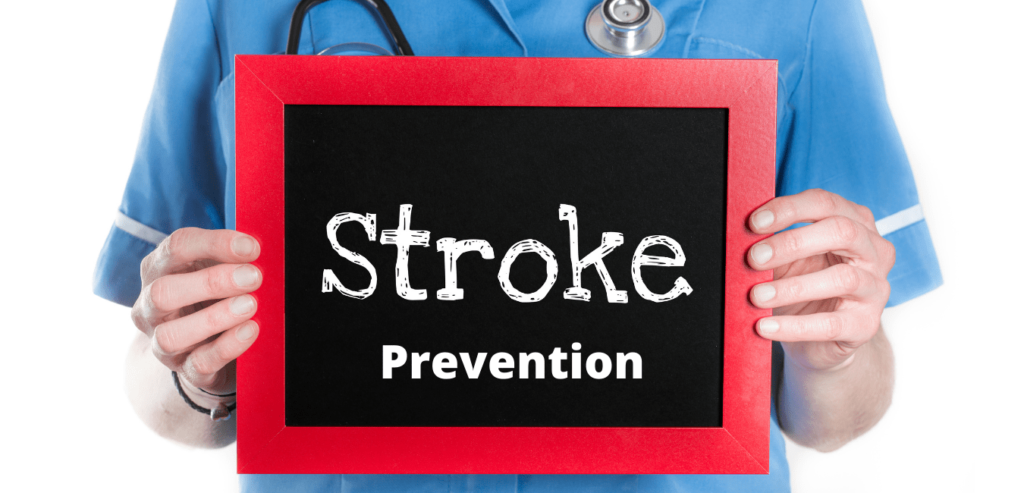Lifestyle Changes to Prevent Stroke
Your Lifestyle Decisions: An Effective Tool to Reduce the Risk of Stroke
A stroke damages brain cells by obstructing blood flow to the brain, which is one of the main causes of disability and death worldwide. Although many risk factors, like as age and heredity, are uncontrollable, there are other lifestyle choices that can influence the likelihood of stroke. This blog post explores the relationship between stroke risk and food, exercise, alcohol usage, and tobacco use, giving you the knowledge you need to make wise decisions now and in the future.
Table of Contents

Diet and Risk of Stroke:
Lifestyle Changes to Prevent Stroke
Your risk of stroke is strongly impacted by the foods you eat and how well your cardiovascular system functions. You can dramatically lower your risk of stroke by eating a balanced diet that is high in some nutrients and low in others.
- Consume A Lot of Fruits, Vegetables, and Whole Grains: These foods are high in fibre, vitamins, and minerals, all of which are essential for preserving normal cholesterol and blood pressure levels.
- Select Sources of Lean Protein: Lean meats, seafood, poultry, and legumes are better options than processed meats that are heavy in trans and saturated fats.
- Reduce Dangerous Fats: Cut back on the saturated and trans fats found in processed meats, baked goods, and fried foods. Select unsaturated fats, which are present in nuts, fish, and olive oil, as good fats.
- Reduce Salt Intake: Consuming too much sodium can raise blood pressure, which is a significant risk factor for stroke. Restrict your intake of processed foods, dining out, and added table salt.
- In charge Added Sugar Intake: Consuming a lot of sugar raises the risk of stroke by promoting diabetes and obesity. Choose natural sugar sources over processed ones, and try to limit your intake of sugar.
Exercise and the Risk of Stroke:
Lifestyle Changes to Prevent Stroke
One of the most important ways to prevent strokes is to exercise regularly. Exercise reduces the risk of stroke by enhancing blood flow, lowering blood pressure, and assisting in maintaining a healthy weight.
Try to get in at least 150 minutes a week of moderate-to-intense aerobic activity or 75 minutes a week of strenuous aerobic activity.
Two or more days a week should be dedicated to strength training exercises.
Make regular exercise a part of your schedule. Use the stairs, go for walks during breaks, or engage in physical hobbies.
Alcohol Use and the Risk of Stroke:
Lifestyle Changes to Prevent Stroke
Drinking alcohol in moderation may be linked to a marginally lower risk of stroke. However, drinking too much alcohol raises blood pressure, which dramatically increases the risk of stroke.
Lifestyle Changes to Prevent Stroke
Restrict your alcohol intake. For women, the American Heart Association suggests no more than one drink per day, and for males, no more than two drinks per day.
Steer clear of drinking too much. The risk of stroke is greatly increased by binge drinking, which is defined as consuming a high amount of alcohol in a brief period of time.
Smoking and the Risk of Stroke:
Lifestyle Changes to Prevent Stroke
One of the most modifiable risk factors for stroke is smoking. Smoking boosts blood pressure, clots more easily, and destroys blood vessels—all of which greatly increase the risk of stroke.
Give up smoking. The most crucial thing you can do to lower your risk of stroke is to stop smoking. There are lots of tools and support systems available to assist you with quitting.
Steer clear of secondhand smoking. Additionally dangerous is secondhand smoke, so avoid areas where smoking is prevalent.
Bringing About Long-Term Changes:
Lifestyle Changes to Prevent Stroke
Making the switch to a healthy lifestyle may feel difficult at first. That being said, your stroke risk profile can be considerably improved by even modest, gradual modifications.
Set reasonable objectives and start small. Concentrate on implementing one or two adjustments at a time, such as walking every day or substituting water for sugary drinks.
Choose a hobby or pastime you love. Working out doesn’t have to be a chore. Whether it’s dancing, riding, or swimming, find something you enjoy doing.
Ask your friends and relatives for assistance. Get the help of those close to you who can support your healthy lifestyle choices.
Consult your physician. Talk about your stroke risk and develop a preventative strategy that works for you.
In summary:
Lifestyle Changes to Prevent Stroke
A good diet, frequent exercise, moderation in alcohol use, and giving up smoking will help lower your risk of stroke and improve your cardiovascular health in general. Never forget that your lifestyle decisions have the ability to affect your risk of stroke. Take charge of your health now to avoid strokes in the future.


